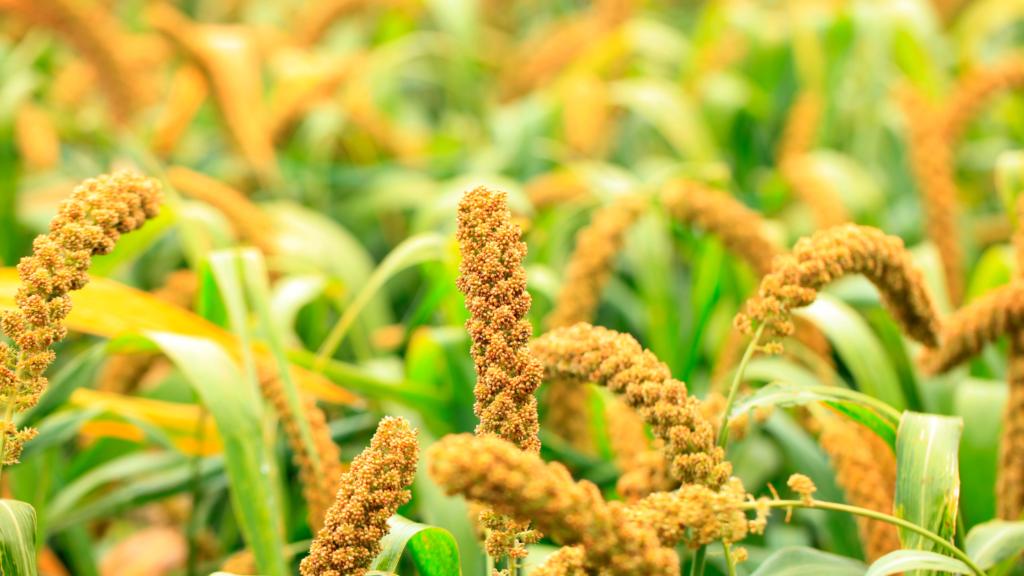
What Is Foxtail Millet?
Foxtail millet, also known as ragi in India, is a versatile ancient grain celebrated for its incredible nutritional benefits and culinary versatility. Originating from China over 5000 years ago, this humble grain has found its way into the hearts and kitchens of millions across the Indian subcontinent.
Where Are Foxtail Millets Grown?
In states like Karnataka, Andhra Pradesh, Tamil Nadu, and Telangana, foxtail millet is a staple crop since it grows well in warm and semi-arid parts of India. It is an essential part of Indian agricultural history and a lifeline for farmers due to its drought resistance and low water requirements.
What Are the Health Benefits and Nutritional Value of Foxtail Millets?
Foxtail millet, often known as ragi, is a nutrient-dense food. Ragi, which is high in vital nutrients including carbs, proteins, and dietary fiber, as well as minerals like calcium and magnesium, provides numerous health benefits.
Gluten-free goodness: Ragi is a gluten-free grain, making it ideal for those with gluten sensitivity or celiac disease.
Gut-Friendly Fiber: The dietary fiber in Ragi supports digestive health, prevents constipation and keeps your gut happy and healthy.
Bone Strength: Thanks to its high content of calcium and magnesium, ragi helps in strengthening bones and can reduce the risk of osteoporosis.
Stabilizing blood sugar: Ragi’s low glycemic index provides a steady supply of energy, helping to regulate blood sugar levels and prevent spikes.
Antioxidant powerhouse: Packed with antioxidants, Ragi fights oxidative stress and reduces the risk of chronic diseases like cancer and heart disease.
Delve into the potential 5 benefits of Millet for diabetes, exploring its nutritional properties and how it can aid in blood sugar control: 5 Benefits of Millet for diabetes control.
What Is Foxtail Millet Called In Other Languages?
Across India, foxtail millet goes by various names, reflecting its diverse cultural significance. In addition to ragi, it’s known as “mandua” in Hindi, “navane” in Kannada, “madua” in Bengali, and “ragulu” in Telugu.
Culinary Delights with Foxtail Millet (Ragi)
In Indian cuisine, ragi finds its way into a variety of traditional dishes, from sweet ragi mud in Karnataka to crispy dosas in Tamil Nadu. They also make sweets like oatmeal, bread, ragi ladoo and drinks like ragi malt. Its fruity flavor and versatility make it a favorite among health-conscious and traditional cooks alike.
Conclusion:
Adding foxtail millet or ragi to your diet is a delicious and nutritious way to boost your overall health and wellbeing. Whether you’re looking to improve digestion, manage your weight, or support bone health, ragi offers many benefits based on Indian culinary traditions. So why not bring the powerful craving goodness to your diet and experience for yourself how delightfully healthy it is.
